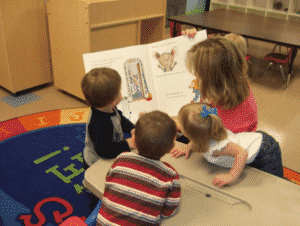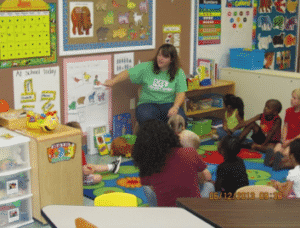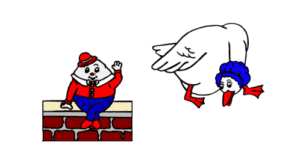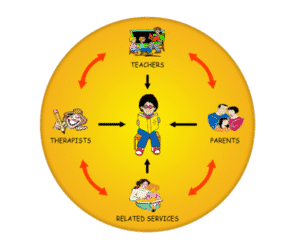Young children with autism thrive in an environment filled with visual cues, familiarity, and predictability. When these three factors are combined with repeated readings of familiar children’s literature, cognitive learning and language skills flourish. Here are specific strategies for combining literature with repetition that have been researched and proven to be successful in helping children with autism make significant gains in speech and language.

1. It is important to choose appropriate literature. Children with autism often think in pictures and are most successful when you choose books that have simple illustrations on each page. The pictures should serve as visual cues to remind the child about the meaning of the text written on the page. Choose books with repetitive words or phrases, words that rhyme, and stories with predictable endings. Match the length of the book to the child’s attention span and select books based on the child’s interest. Choose books that offer opportunities to expand a variety of language and cognitive skills.

2. Many children with autism suffer from anxiety which interferes with their ability to learn. Read It Once Again uses repetition to foster predictability. The ability to predict routines and outcomes relieves anxiety for young children with autism. Repeating a story and the activities related to basic foundational skills for an extended period of time creates a predictable and familiar environment for learning. The length of time that the story is repeated depends on the age and ability of the child. The younger the child, the longer the duration. It is recommended for children functioning around the age of 3, that the story is repeated for an entire month. Research has proven that extending the story strengthens the neural pathways in the brain that help to retain and apply foundational skills needed for higher academic learning. https://www.readitonceagain.com/level-1-20-foundational/

3. Generalizations of abstract and cognitive skills are a challenge for children with autism. Children often memorize correct answers in the format in which they are presented. If the format is changed, we sometimes find the child cannot generalize the concept in a variety of situations. Read It Once Again provides many strategies for acquiring and retaining concepts that gradually move children beyond their comfort zone. Repeating activities focusing on foundational skills and also related to a familiar story help children learn without causing frustration and anxiety.

4. Read It Once Again curriculums offer another essential strategic component, the repeating of rhymes, and especially Mother Goose rhymes. Children with autism often struggle with expressive language. Mother Goose rhymes usually consist of simple, rhythmic, rhyming text and is often set to music. The words are easily memorized and generally have little logical meaning. Mother Goose allows children to play with sounds and words without the stress of having to use the correct pronunciation or sentence structure. Many children who are on the verge of acquiring expressive language are more likely to experiment with the rhyming nonsense words which lead to an increase of expressive language.

5. It is important to present educational concepts in a wide variety of situations. Repeating a story for a month provides the opportunity to present basic foundational skills in many different domains using familiar characters and objects from the story. It allows speech pathologists, occupational therapists, physical therapists, and teachers to coordinate with each other using the story as a common theme to help children with autism grasp abstract concepts in a variety of different situations. When all education professionals share the common focus of combining goals and objectives with the same repetitive story, concepts are no longer taught in isolation and the child makes greater gains.

Read It Once Again literacy curriculum units help teachers, therapists and parents find the piece of the puzzle that will unlock the key to enter their child’s world and begin fostering techniques to improve communication skills. For more information visit our website at www.readitonceagain.com



